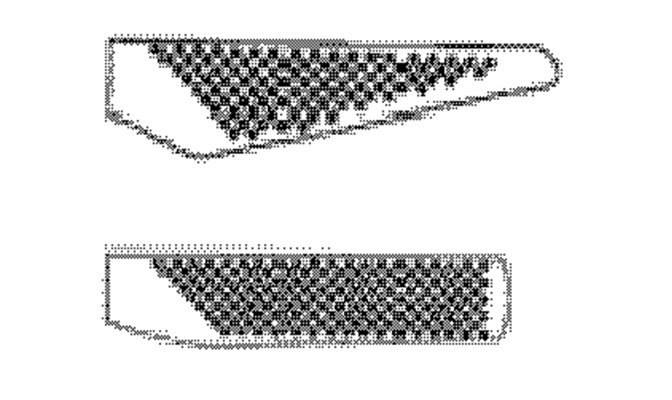The General Court of the European Union held that marks that included protecting a technical function or functionality of the goods were invalid.
McKeown’s Brand Management in Canadian Law Newsletter
Authors/Editors: John McKeown
Protection of Functional Trademarks
I.4 — Protection of Functional Trademarks
A recent decision of the General Court of the European Union raises interesting issues concerning the protection of trademarks which are functional in nature.
The Proceedings
Yoshida Metal Industry Co. Ltd. (”Yoshida”) filed two applications for Community trademarks in November 1999 consisting of the signs reproduced below:

There were for use in association with, among other things, the handle of a knife. Yoshida overcame adverse decisions by examiners through administrative appeals and eventually obtained registrations in September 2002.
In July 2007, three competitors applied to have the trademarks declared invalid alleging that the trademarks related to the shapes of goods, which was necessary to obtain a technical result, contrary to the applicable European legislation. The validity of the registrations was initially upheld, but on appeal it was found that the registrations were not valid on the ground that the black dots represented dents necessary to obtain a non- skid effect.
Yoshida appealed the decision to the General Court who agreed with the initial decision and found that the registrations were valid. The third party competitors then appealed to the Court of Justice of the European Union who allowed the appeal and referred the matter back to the General Court to rehear the appeals.
Eventually, in May 2015 the General Court determined that the registrations of the marks in issue were invalid in so far as the essential characteristics of the signs consisted exclusively of the shape of goods necessary to obtain a technical result.
The Decision
The General Court said that the rationale relating to precluding the registration of signs whose essential characteristics perform a technical function was to prevent trademark protection from granting to the owner a monopoly over technical solutions or functional characteristics of a product which a user is likely to seek in the products of competitors. The limitation is intended to prevent the protection conferred by a trademark from being extended beyond signs used to distinguish goods or services so as to form an obstacle preventing competitors from freely offering for sale goods incorporating such technical solutions or functional characteristics.
The black dots were found by the court to actually represent indentions; they were not mere two dimensional colourings painted onto the handle but indentations; blackened and featured on the surface of the handles. This finding was confirmed by a reading of the European and U.S. patents owned by Yoshida. In fact the patents asserted claims with respect to the dents as providing a non-skid structure and function.
Since the signs at issue did not have any clear ornamental character, their registration would reduce the possibility of competition as competitors would be precluded from bringing alternative product shapes to the market that incorporated the same non-skid technical solution. As a result of these findings, the court confirmed that the registrations were invalid.
The Current Trade-marks Act
There is currently no provision in the Act directly dealing with this issue for regular trademarks. However it has been established that if alleged functionality relates either the mark itself or to the goods or services this is inconsistent with registration. However, if the functionality is secondary or peripheral with no essential connection to the goods or services this will not be a bar to registration. For example, a telephone number for pizza delivery was found to be registrable.
The Amendments to the Canadian Trade-marks Act
Once the outstanding amendments to the Canadian Trade-marks Act are brought into force we will be faced with wording that is somewhat similar to the European legislation in our trademark legislation. The concept of registration of signs relating to the shape of goods will be incorporated into the Act. In addition, it is provided that a trademark is not registrable in relation to goods and services in association with which it is to be used, if
its features are dictated primarily by a utilitarian function. Finally, the registration of a trademark does not prevent a person from using any utilitarian feature embodied in a trademark.
If a case similar to the Yoshida case was to be decided under this legislation, a strong argument could be made that a registration should not be granted since the signs in issue relate to the shape of a knife handle with a non-skid feature, both of which features are designed to be useful.
Comment
It certainly appears that the configuration of the knife handles was important to Yoshida who obtained patent protection and then subsequently sought to obtain trademark protection. The term of protection of a patent is limited but as they say trademarks are forever. Under the circumstances it seems reasonable that the monopoly granted by the patent should not be indirectly extended by obtaining a trademark registration.